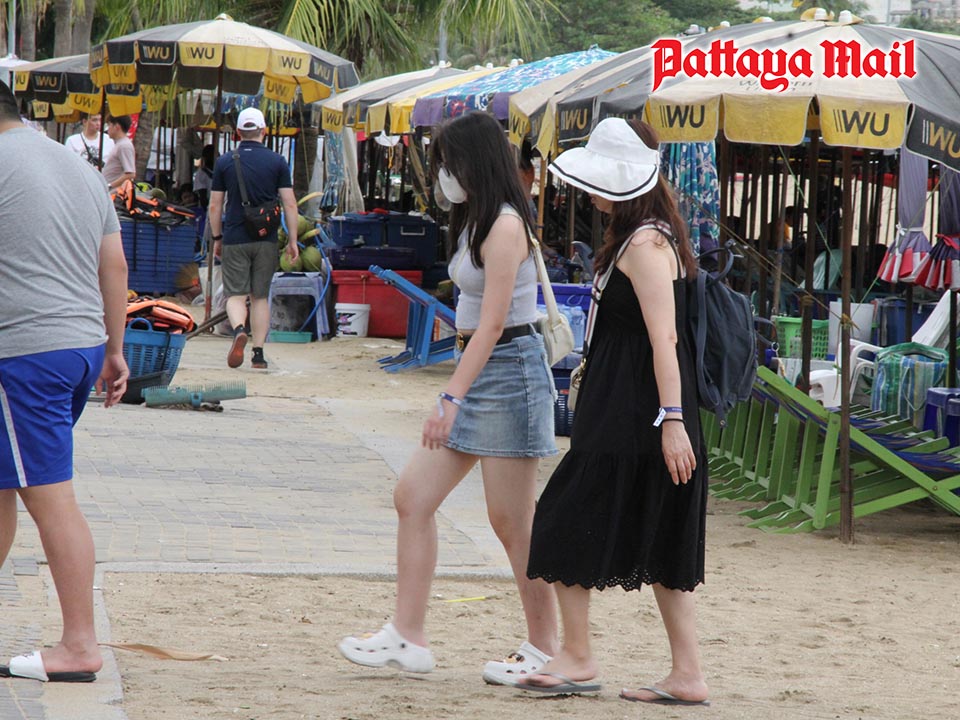Pattaya counts on Thai and Indian tourists despite doubts over spending and social tensions
Indian, Chinese, and Malaysian tourists drive Pattaya’s recovery — but spending habits reveal a new tourism landscape. (Photo by Jetsada Homklin)
PATTAYA, Thailand – As July rolls in, Pattaya’s tourism authorities are focusing on the domestic market through the ‘co-pay’ program. With fewer long-haul visitors arriving during the low season, Thai families on school break and regional travelers — including a growing number from the Indian subcontinent — are expected to fill the gap. However, not everyone is convinced this influx will deliver the kind of “holiday rush” the city needs.
Online, skepticism is loud. “Holiday rush? Joke of the year,” one long-time visitor wrote, mocking optimistic headlines. “Where do they get it from — what rush? It’s empty. There is no rush in high season anymore, never mind low season.”
While tourism agencies focus on visitor numbers, some foreign tourists argue the real issue is who is coming — and whether they contribute meaningfully to local businesses. “Pattaya doesn’t need more locals using government coupons when there are already hundreds of thousands here,” one business operator claimed. “What’s needed are Europeans, Americans, and Australians.” Others emphasize declining visitor spending, noting, “It’s spenders that matter, and the countries I mentioned spend far more per person.”
But the numbers tell a different story. Indian, Chinese, and Malaysian travelers are now among the top sources of inbound tourism to Thailand. In sheer volume, they’re helping Pattaya stay afloat — even if their spending patterns differ. “July-August sales equals India,” one poster summarized bluntly.
Still, cultural clashes and social friction are emerging. “Cruel… never again Pattaya!” wrote one disillusioned regular. “I was always in Thailand for the last 25 years, 2-3 times a year, but I’m avoiding Little India now.” Complaints range from behavior in public spaces to competition for space in restaurants and convenience stores. “Had to step way back to get into a queue,” one visitor recounted after an encounter at a 7-Eleven checkout. “They just won’t learn,” said another, highlighting tensions that extend beyond economics.
July–August may bring numbers, but not everyone’s convinced the new wave of tourists will bring spending or stability. (Photo by Jetsada Homklin)
The atmosphere online swings between blunt frustration and weary nostalgia. “It was a nice place back in 2000,” one man said. “Tree Town was near empty the other night. We’ll be lucky if we get a high season this year.”
Still, not everyone is pessimistic. Some acknowledge that different groups serve different purposes: “Baht bus is cheap and convenient,” one comment reads — followed by a practical reminder, “just be aware of pickpockets.” Others argue the right pricing model can keep bars running even in a soft season. “Don’t be greedy — take a smaller profit, and at the end of the year you make more,” a bar owner offered.
The broader point may be this: Pattaya is evolving. The debate between traditional Western visitors and the growing wave of regional tourists underscores a city caught between nostalgia and necessity. And while the July-August push for Thai and Indian arrivals might not bring back the beer bar buzz of 1999, it may help keep the lights on — for now.
The only question is whether the peace that makes Pattaya appealing will survive the growing pains of a changing tourist base — or whether, as one skeptical poster warned, “The sub-continentals won’t save the place… if anything; they’ll have the opposite effect.”



